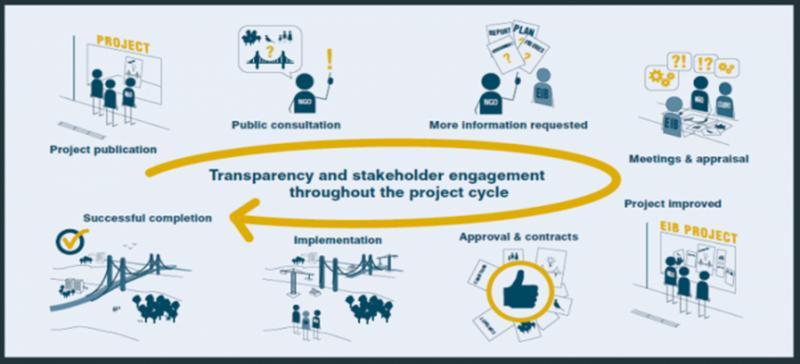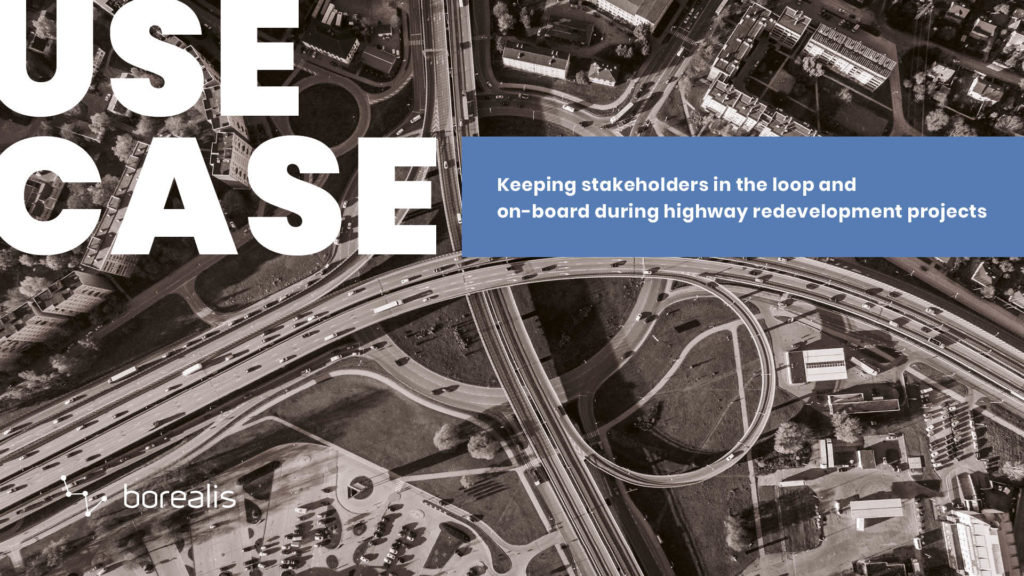Public transit has had a bumpy ride in recent years. The Covid pandemic, chronic labor shortages, and the energy transition – along with countless other factors – have transformed public transportation. The stakeholder landscape is changing, too.
Understanding this evolving landscape is vital to project success in public transportation planning, whether it’s the electrification of fleets or making urban mobility more accessible to all. Public transit agencies and operators need effective stakeholder engagement strategies to manage the interests and influence of their complex stakeholder relationships.
This guide identifies and analyzes the key stakeholders in transportation: their roles, interests, and influence. It also delves into the benefits of managing stakeholder relationships in public transportation.
Who are the stakeholders in the public transportation industry?
Stakeholders in public transit planning include all individuals, groups, and organizations that have an interest in or play a role in a public transit project. These public transit stakeholders can be internal (government/agency officials) or external (community groups, riders).
General categories of stakeholders in transportation
Examples of stakeholders in transportation:
- Government agencies
- Political officials
- Non-Profit or non-governmental organizations
- Community and neighborhood groups
- Current and potential public transit customers
- Employees
- Local business owners
- Environmental and advocacy groups

When identifying public transportation stakeholders, it’s important to think about whom your project will affect, either positively or negatively. Also, think about who might have reasons to want the project to succeed or fail.
In the U.S. the Federal Railroad Administration held stakeholder meetings to study the restoration and expansion of Amtrak’s long-distance passenger rail services
Stakeholders analysis in public transportation
Detailed analysis of the key stakeholders, their roles, and their interests
Government agencies
Political officials
Non-profit or non-governmental organizations
Community and neighborhood groups
Current and potential public transit customers
Employees
Local business owners
Environmental and advocacy groups
Great British Railways’ Whole Industry Strategic Plan prioritizes the perspectives of public transit stakeholders. This holistic approach ensures that the rail system addresses the diverse needs and concerns of passengers, employees, communities, and other key stakeholders. Their feedback is crucial to shaping a more efficient, reliable, and user-centric British railway network.
How do these stakeholders influence the operations and strategies of public transportation systems?
Government agencies
Political officials
Community and neighborhood groups
Current and potential public transit customers
Riders can directly influence demand and service quality through their travel choices and shared feedback on the agency’s grievance and feedback portal or other mechanisms. On the other hand, a surge in ridership might lead to adding more or larger vehicles to certain routes.
Employees
Local business owners
Environmental and advocacy groups
Engaging with stakeholders in public transit planning
By balancing the diverse interests and feedback of stakeholders, public transit agencies and operators deliver transportation initiatives that are robust, responsive, and resilient. The key is to engage stakeholders throughout the entire project, beginning at the pre-planning stage.
Meaningful stakeholder engagement is a continuous process that is initiated early in the process and monitored closely throughout the project.
Transportation planning decisions can have significant equity impacts, and most communities want to become more equitable, so practitioners have a responsibility to consider equity in their analysis. That can be challenging because there is no single way to evaluate transportation equity; there are multiple equity types, impacts, metrics, and groupings to consider. Planning decisions should reflect a community’s equity needs and values, so it is important to incorporate public engagement that involves all stakeholders, particularly disadvantaged groups.

Overview of the process of involving stakeholders in public transit planning
Here are 5 steps that could be involved in a mobilization process in the public transportation sector:
- Stakeholder identification: Identify all groups and individuals likely to have an interest in or be affected by the project.
- Stakeholder analysis: Assess their needs, expectations, concerns, interests, and degree of influence. Group and prioritize these groups by importance.
- Mobilization plan: Define objectives, personalized communication and participation methods, and timelines for each individual or group, taking into account their diversity and specificities.
- Communications: Communicate with stakeholders to inform them of the project, its objectives and benefits, as well as the agency’s interest in listening to what they have to say.
- Engagement activities: Organize consultations, engage in dialogue, gather feedback, collect and analyze qualitative and quantitative data, and integrate this information into the strategic plan.
7 biggest benefits of stakeholder engagement in the public transit sector
Responsible stakeholder engagement lets project planning teams:
- Improve decision-making by tapping into valuable on-the-ground insights and diverse viewpoints from public transportation stakeholders.
- Increase support for transportation initiatives to secure project approvals, funding allocations, and overall success.
- Proactively address stakeholder concerns to better manage potential risks like community opposition, regulatory hurdles, or unforeseen operational challenges.
- Optimize resource allocation by ensuring investments are directed towards the most impactful and necessary aspects of the transportation project.
- Improve project outcomes by ensuring transportation systems are efficient, sustainable, and cater to the actual needs of riders.
- Strengthen trust and relationships to ensure smoother collaboration with public transport stakeholders in current and future projects.
- Promote transparency and accountability through open, two-way dialogue with public transit stakeholders to ensure authorities are held accountable for their decisions and actions.
APTA’s recommended practice: Communication and Coordination with External Stakeholders for Transit Asset Management recognizes that informed decision-making relies on diverse inputs. This recommended practice encourages transit agencies to engage partners, communities, and other entities to ensure asset management strategies align with broader goals and stakeholder expectations, fostering collaborative, efficient, and sustainable transit solutions.
Challenges of managing stakeholders in public transportation
The linearity of public transportation networks can make projects particularly challenging. Similar to power transmission lines, a public transportation project may cover multiple neighbourhoods. Issues and concerns may vary from one neighbourhood to another. So might cultural, historical or political sentiment.
Stakeholder management teams may need to treated each neighborhood or segment as a unique stakeholder entity with its own engagement plan. At the same time, it’s important to recognize that within each neighborhood or segment there will inevitably be other key individual or stakeholder groups that will need to be managed carefully.
A matrix can be used to better understand the interdependencies of these complex stakeholder relationships in linear public transportation projects.
Case study of stakeholder engagement in the public transportation sector
Here’s an example of how a community involvement team for a major highway development project in the U.S. kept stakeholders in the loop and on board.
The team’s objectives were to minimize unexpected disruptions, maintain accurate, accessible records of their extensive stakeholder engagements, and communicate their progress to the state Department of Transportation (DOT) throughout the project. The team used the specialized stakeholder management software Borealis to achieve these goals.
Thanks to the user-friendly features in Borealis, the team was able to:
- Create specific engagement plans for each stakeholder group to ensure every outreach was both strategic and comprehensive.
- Turn these outreach strategies into actionable tasks assigned to individual team members to ensure consistent and organized engagement.
- Centralize stakeholder data by consolidating all stakeholder interactions, opinions, and resources into one unified system, eliminating the need to sift through disjointed data sources.
- Gain clearer insights by customizing the software’s user-friendly interface to create useful dashboards and reports.
- See each stakeholder’s geographical location with Borealis’ GIS mapping feature to better understand their unique context and concerns about the project.

We’re now able to hold public involvement up to clear metrics. Instead of just reporting anecdotal success rates, we can easily present decision makers with clear figures backed with detailed records.
U.S.-based community involvement team working on a major highway redevelopment project
Key takeaways
- Early and regular stakeholder engagement is essential for the successful planning and roll-out of major public transportation projects.
- To secure support and gain the valuable public transit stakeholder insights needed for effective decision-making, individual engagement strategies must be created for each key stakeholder group.
- To be meaningful and insightful, engagement must be two-way and adapted to the stakeholder’s preferred method of communication.
- The creation, implementation, monitoring, and reporting of stakeholder engagement activities and outcomes can be greatly facilitated by using specialized stakeholder engagement software like Borealis.
For nearly 20 years, Borealis has been helping public transit agencies and operators around the world achieve their goals with user-friendly tools that facilitate a multitude of tasks associated with stakeholder engagement.
To find out more about all the features Borealis has to offer, please contact us.





